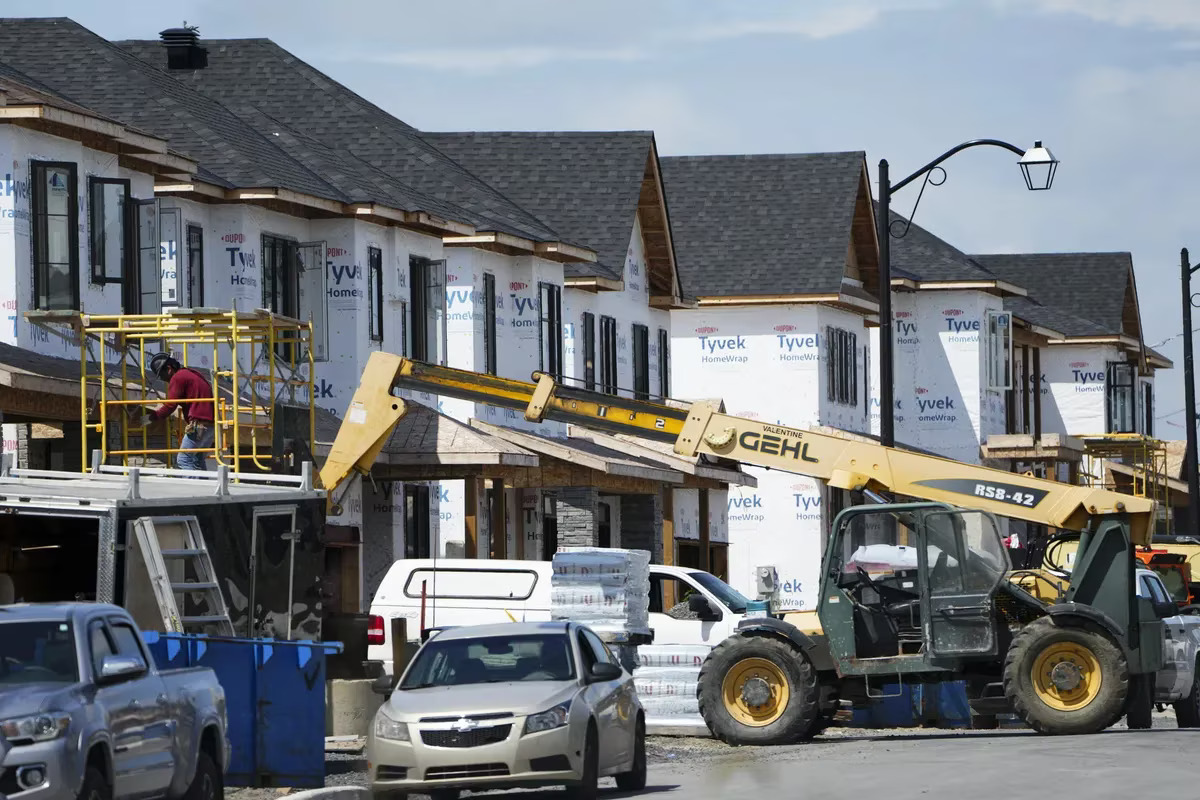


The resounding alarm bells are taking on the deafening tone of bull horns, echoing across Canada’s real estate landscape. The critical issue at hand: the glaring inadequacy of housing supply to keep pace with the relentless surge in population growth.
A chorus of academics, commercial banks, and policy thinkers are harmoniously sounding the warning bells, urging the federal government to acknowledge the crisis exacerbated by the accelerated influx of immigrants contributing to the expanding populace.
Murtaza Haider, a distinguished professor of data science and real estate management at Toronto Metropolitan University, emphasizes the crux of the matter: “The primary cause for (the) housing affordability challenge in Canada is our inability to build more housing that is in line with the increase in population.”
A recent report released by TD Bank in late July echoes this sentiment, asserting that “continuing with a high-growth immigration strategy could widen the housing shortfall by about a half-million units within just two years.”
In contrast to these apprehensions, the Liberal government remains steadfast in its commitment to a robust immigration policy. Their stance rests on the premise that a higher immigration rate not only supports the economy but also addresses the dire housing shortage.
Immigration Minister Marc Miller reinforces this position, stating, “Looking at the (immigration) levels that we have recently approved as a cabinet (and) as a government, we can’t afford currently to reduce those numbers.”
One of the driving factors behind this stance is Canada’s aging population. The country faces the challenge of an increasingly elderly workforce, resulting in heightened healthcare demands and a shrinking tax base. The critical juncture of an aging demographic prompts the need for a continuous influx of younger immigrants to offset the imbalance.
However, concerns are mounting. A 2022 Statistics Canada report reveals that more than one in five working-age Canadians are nearing retirement. Simultaneously, Canada’s fertility rate hit a record low, contributing to the demographic challenge.
The TD report raises a poignant question: has the sudden surge in population, brought about by escalated immigration, gone too far too quickly? The rapid shift in demographics is leading economists to contemplate the ramifications on the economy and housing market.
The federal government’s ambitious immigration plan, introduced in fall 2022, charts a trajectory that could see Canada welcoming 500,000 immigrants annually by 2025. In contrast, the target in 2015 was under 300,000. Yet, it’s not just higher immigration quotas propelling population growth; the rise in temporary residents, including international students and temporary foreign workers, also plays a significant role.
As Canada’s population grew by over one million people in 2022, it included a staggering 607,782 non-permanent residents and 437,180 immigrants. The scale of this influx warrants scrutiny, and Miller acknowledges the government’s readiness to address concerns, particularly in light of fraudulent activities related to international student enrollments.
This intensified focus on immigration and population expansion coincides with Canada grappling with a housing affordability crisis, primarily due to a dearth of available homes. Experts, however, contend that the core reasons behind this housing shortage are unrelated to immigration. Bureaucratic red tape and reluctance to embrace development at the local level often lead to project delays.
While the complex housing dilemma persists, the prospect of robust population growth raises additional concerns. A May analysis by BMO highlights that every one percent increase in population corresponds to a three percent increase in housing prices. This dynamic is acutely evident in the Canadian real estate market’s resurgence this year, underlining the role of immigration in maintaining housing demand despite escalating interest rates.
Mike Moffatt, a housing expert and economist at Western University’s Ivey Business School, asserts that altering immigration targets might not be necessary. Instead, Moffatt advocates for bold action in addressing housing challenges.
The confluence of population growth and housing prices places the federal Liberals in a precarious position, as public support for immigration policies becomes increasingly tenuous. A survey conducted by Abacus Data underscores that Canadians are anxious about immigration’s impact on the housing market.
David Coletto, CEO of Abacus Data, outlines the duality of public perception, stating, “There’s a belief, anyways, that on the one hand, immigration is needed… but they also see the downside, which is putting further pressure on the housing market and pressure on health care.”
In the midst of this dilemma, Miller emphasizes the need for measured analysis, while also acknowledging the presence of bias-driven critiques. Striking a balance between the imperative of immigration and the urgency of the housing crunch remains a formidable challenge.
For the government, these dilemmas translate into an imperative to reevaluate housing and immigration policies. Aligning these two facets, according to Housing Minister Sean Fraser, requires deep contemplation to ensure the effective growth of communities and the construction of much-needed homes.
As Canada navigates this complex landscape, the interplay between population growth, immigration, and housing supply remains a critical narrative to watch, a narrative that will influence the very fabric of the nation’s future.